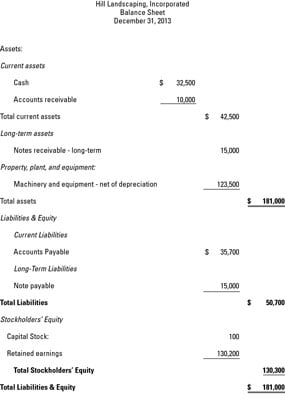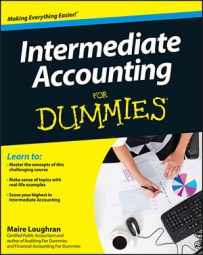The balance sheet shows the health of a business from the day the business started operations to the specific date of the balance sheet report. The balance sheet has three sections: assets, liabilities, and equity. Following is a thumbnail sketch of the three:
Assets: Resources a company owns, such as cash, equipment, and buildings
Liabilities: Debt the business incurs for operating and expansion purposes
Equity: Amount of ownership left in the business after deducting total liabilities from total assets
Standing on their own, they contain valuable information about a company. However, a user has to see all three interacting together on the balance sheet to form an opinion approaching reliability about the company.
A classified balance sheet groups like accounts together. For example, all current assets, such as cash and accounts receivable, show up in one grouping. Likewise, all current liabilities, such as accounts payable and other short-term debt, show up in another grouping. This structure assists users of the balance sheet so they don’t have to go on a scavenger hunt to round up all similar accounts.

Note two important points about the balance sheet:
The date on a balance sheet is always the last day of the accounting period reflected on the statement.
Assets must always equal the total of liabilities plus equity. If they don’t, the balance sheet doesn’t balance — and then something is definitely wrong!
This balancing act is known as the fundamental accounting equation. Get it? Balance sheet — balancing act? Another way to state it is net assets equals equity. Using the term net assets is the same as saying “assets minus liabilities.
For a more detailed look into stockholders’ equity many companies also prepare a statement of changes in stockholders’ equity showing stockholders’ equity at both the beginning and end of the year.

